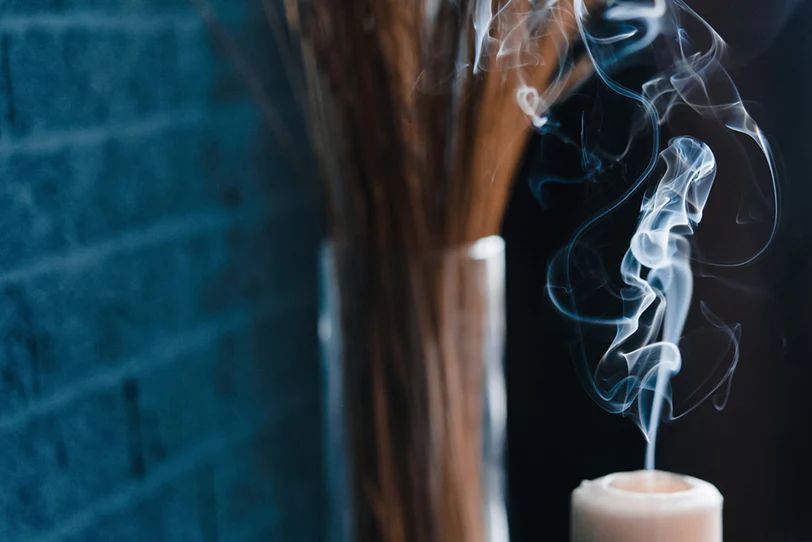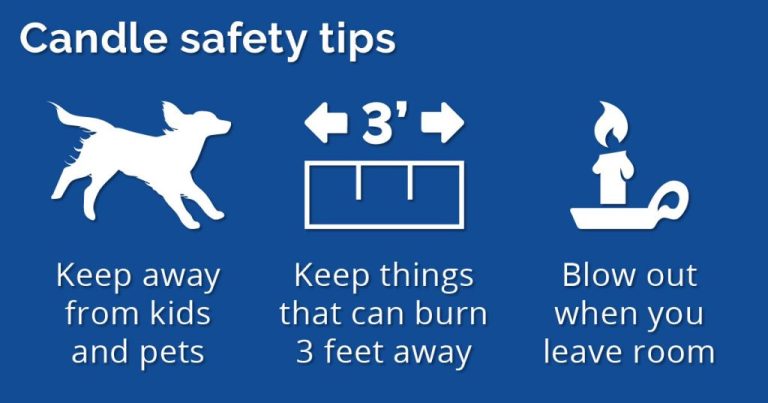Where Does Candle Wax Go When Burned?
Candles have been used for light and fragrance for thousands of years. When a candle burns, the heat of the flame melts the solid wax which is then drawn up the wick by capillary action. The wax vaporizes at the flame and releases compounds that provide aroma. But where does all that melted and vaporized wax actually go when a candle burns? This article provides an overview of the candle burning process and explains what happens to the wax as it transitions from solid to liquid to gas.
The global candle industry is estimated at over $12 billion annually, with sales steadily rising each year (https://www.statista.com/outlook/cmo/furniture/home-decor/candles/worldwide). With such widespread use of candles, it’s important to understand where the wax ends up when burned, and any potential impacts on indoor air quality or surfaces.
What is Candle Wax Made Of?
Candle wax is primarily composed of hydrocarbons, which are compounds containing hydrogen and carbon. The specific chemical composition depends on the wax source.
Paraffin wax, made from petroleum, is a mixture of straight chain alkanes like octacosane (C28H58) with the chemical formula CnH2n+2. It has an average chain length of 20-40 carbons (Elements of a Candle: Wax).
Soy wax is made from hydrogenated soybean oil. Its main components are palmitic, stearic, oleic and linoleic esters like methyl palmitate and methyl stearate (What is Candle Wax made of Chemically?).
Beeswax consists of over 300 compounds, including palmitate, palmitoleate, hydroxypalmitate and oleate esters of long chain (30-32 carbons) alcohols (The Chemistry of Candles).
What Happens During Candle Burning?
When a candle burns, a chemical reaction called combustion occurs. The candle wax (typically made of paraffin) acts as the fuel source. The wick is generally made of braided cotton that brings the melted wax to the flame and provides a continuous fuel source.
As the wick burns, it melts the solid wax around it into a liquid. This liquid wax then moves up the wick via capillary action. When the wax reaches the flame, it vaporizes into a hot gas or vapor state. This vaporized wax mixes with oxygen in the air. When the vaporized wax molecules meet the oxygen molecules, combustion occurs.
Specifically, in the flame, the hydrocarbon chains that make up the wax molecules break apart in a process called pyrolysis. The hydrogen and carbon atoms rearrange with oxygen to form new molecules – mainly water vapor (H2O) and carbon dioxide (CO2). This chemical breakdown releases energy in the form of light and heat. The continuum of this process whereby the wax vaporizes, mixes with oxygen, and combusts sustains the candle’s flame and allows it to keep burning. The chemical equation for a simple hydrocarbon fuel like paraffin wax is:
Candle wax (hydrocarbon) + Oxygen —> Carbon dioxide + Water vapor + Heat + Light
The blue part at the base of a candle flame is where pyrolysis is occurring and wax vaporization begins. The yellow part on top is where the combustion reaction takes place as the wax vapor mixes with oxygen. The resulting flame provides both illumination from the blackbody radiation of the soot and heat from the exothermic combustion reaction (Source 1, Source 2).
Where Does the Melted Wax Go?
When a candle burns, the flame heats the wax at the tip of the wick, liquefying it. According to CandleScience.com1, the melted wax is then absorbed by the wick through capillary action, much like a paper towel soaking up a spill. This allows the liquefied wax to travel up the wick where it is vaporized by the flame.
Some of the melted wax also drips down the sides of the candle container and pools at the base, which is why you’ll notice wax buildup on the sides and bottom of a candle as it burns. The heat from the flame causes some of the melted wax to evaporate before reaching the wick or container sides. In fact, TasteofHome.com2 states that around 10% of candle wax simply evaporates into the air while burning.
Where Does the Wax Smoke and Soot Go?
When a candle burns, it produces smoke and soot made up of tiny particles of unburned carbon. These particles come from the incomplete combustion of the candle wax. As the candle burns, some of the wax doesn’t get hot enough to fully break down into carbon dioxide and water. Instead, it partially burns and creates soot.
According to studies, candle soot is made up of ultrafine particles with sizes ranging from 10 to 320 nanometers (Pagels et al., 2009). These tiny particles can easily become airborne when disturbed by air currents from the candle flame or people walking past the candle. Once airborne, the smoke and soot will circulate throughout the room. The smaller particles can remain suspended for hours, while larger particles may deposit on surfaces like walls, furniture, curtains, and shelves (Verdugo et al., 2020).
Candle smoke also contains small amounts of VOCs, PAHs, and metals that can deposit on surfaces along with the soot (Pagels et al., 2009). The distribution of candle soot depends on air currents in the room, but surfaces closest to the candle tend to collect the most residue.
Over time, the smoke particles build up on surfaces, leading to black stains and difficult-to-remove grime. The deposited soot is visually unappealing but also poses potential health hazards if left to accumulate (Pagels et al., 2009). Regular cleaning is necessary to remove candle soot before it becomes too thick or embedded.
Factors Affecting Wax Dispersal
There are several factors that affect how candle wax gets dispersed when burned. The main ones are:
Wick Type

The type of wick used in a candle affects how quickly and completely the wax burns. Cotton and paper wicks tend to burn cooler and slower, leaving more unburned wax behind. Metal-core wicks burn hotter and promote more complete wax consumption (Source).
Air Currents
Air currents around a burning candle can disperse wax particles and smoke. Open windows or fans in a room create air currents that can spread wax and soot over a wider area. Stagnant air will keep more particles concentrated around the candle (Source).
Candle Shape and Size
The shape and size of a candle also impacts wax dispersal. Large pillar candles with more surface area exposed to air will burn faster and produce more dispersed wax compared to smaller tealight or votive candles. Containers that fully encase a candle will limit wax dispersal compared to free-standing pillar candles (Source).
Is Candle Smoke and Soot Hazardous?
There has been some concern that inhaling the smoke and soot from candle burning may have negative health effects. However, research suggests that the exposure levels from normal household candle use are very low and do not pose significant risks.
According to experts, the main health concern would be from soot particles that contain traces of chemicals like benzene and toluene. However, studies have found that the amount emitted during typical candle burning is hundreds to thousands of times lower than safety limits for indoor air exposure.1
One 2021 study tested emissions from scented candles under controlled lab conditions. It estimated that indoor air levels in a small room after 1 hour of burning would be well below thresholds deemed safe by regulatory agencies.2
According to experts at the Cleveland Clinic, there is very limited evidence linking candle burning to health problems like lung conditions or cancer at typical household use levels. One would likely need to burn an excessive number of candles for very extended periods to reach hazardous exposure levels. 3
However, there are certain situations where caution should be exercised. People with severe asthma or chemical sensitivities should minimize candle burning. Burning an excessive number of candles in a small, poorly ventilated space could also raise risks. Proper ventilation, limiting burn times, and avoiding cheaper candles with higher soot outputs can help minimize any potential hazards.
Cleaning Up Candle Residue
One issue with burning candles is that they can leave behind residue in the form of wax stains or soot. Thankfully, there are some effective methods for cleaning up this candle residue.
For removing dried wax, try using an ice cube to harden the wax, allowing you to peel or chip it away more easily. Use a plastic card or dull knife to gently scrape off peeled wax pieces. Another option is to place a paper towel or cloth over the wax stain, then press with a warm iron to absorb the wax into the material. Test cleaners like Goo Gone, rubbing alcohol or mineral spirits on an inconspicuous area first, as they can dissolve wax for easier removal.
To clean wax from glass surfaces, a window cleaner, rubbing alcohol, bleach or vinegar often work well to dissolve and separate wax. For waxed fabrics, place the material between sheets of wax paper or foil and press with an iron to absorb the wax, replacing paper as needed. Then treat with stain remover and launder as usual.
For candle soot, use a vacuum with brush attachment to remove loose particles from surfaces. Lightly rub with dampened melamine foam to lift additional staining. Stronger cleaners like fantastik, vinegar, baking soda or dry erase marker can tackle more stubborn smokey residue.
No matter the surface, always spot test cleaners in an inconspicuous area first. And with patience and the right solvent, you can successfully remove dried wax and soot stains from most materials.
Source: https://www.hotelcollection.com/blogs/news/how-to-clean-candle-wax-off-anything
Safety Tips for Candle Burning
To help prevent fires and other safety hazards, it’s important to follow proper candle safety tips. The National Candle Association and National Fire Protection Association recommend these best practices for safe candle usage:
Trim the wick to 1⁄4 inch before lighting. Long or crooked wicks can cause uneven burning and dripping. Trim the wick each time before lighting to remove any charred portions and promote an even flame. Use wick trimmers specifically designed for candles.
Put candles in stable, fireproof holders on sturdy, uncluttered surfaces. Don’t place lit candles near anything flammable or within reach of pets or children. According to the NFPA, avoid using candles near trees, curtains, books, paper, or anything that can catch fire. The candle holder should be heat resistant and nonflammable.
Use sturdy, nonflammable candle containers made of glass, metal or ceramic. Containers like mason jars can crack or shatter from the heat. Ensure the candle fits properly inside the holder and is not too close to the rim (NFPA recommends leaving 1-2 inches of space).
Never leave a burning candle unattended. Extinguish candles before leaving a room and when going to sleep. Don’t leave pets or children alone with lit candles. The NFPA recommends burning candles no longer than 4 hours at a time.
Keep burning candles away from drafts, vents or air currents. This can cause rapid, uneven burning and dripping. Place candles out of direct sunlight to avoid overheating the wax. Trim the wick as needed to maintain a steady flame.
Put candles out with a candle snuffer or wet fingers. It’s safest to smother the flame rather than blowing it out, which can disperse hot wax. Make sure the wick is no longer glowing before leaving it unattended.
Don’t continue using a candle that develops tunneling, sooting or dripping. This indicates an improper burn and the candle should be put out and discarded. Trim the wick regularly to maintain an even burn and prevent excess dripping.
Consider using battery-operated flameless candles. These eliminate the fire hazard while providing ambiance. Use flashlights or battery-powered lanterns as an alternative to candles when power is out.
Take extra care with scented, decorative and colored candles. Additional dyes, fragrances and additives can increase burning hazards. Follow the manufacturer’s safety instructions carefully.
Keep burning candles out of reach of children and pets at all times. Never leave kids or pets alone in a room with lit candles. Store candle supplies, lighters and matches securely out of their reach.
Follow the one-foot circle rule. Allow at least one foot of space on all sides between a burning candle and any combustibles. Avoid placing candles underneath cabinets, shelves, curtains or other objects.
Always have working smoke alarms and fire extinguishers nearby when burning candles. Test smoke alarms monthly and replace batteries at least once a year. Have an emergency plan for escaping the home if a fire should occur.
Source: https://www.nfpa.org/education-and-research/home-fire-safety/candles
Conclusion
When a candle burns, the wax melts and vaporizes into the air while the wick chars and produces smoke and soot. The wax vapors quickly cool and condense back into solid form, coating surfaces near the flame with a thin film of wax. The smoke and soot get carried upwards by convection and dispersed into the surrounding environment. The amount of smoke produced depends on the candle’s composition, wick size, and burn rate. Proper ventilation can help reduce buildup of residues. While occasional candle use has low risks, burning frequently or for long periods in unventilated areas allows residues to accumulate and may pose potential fire/health hazards. With awareness of how candle burning works and some simple precautions, candle lovers can enjoy their hobby while minimizing risks and cleanup.
In summary, the wax vaporizes when heated but largely condenses and deposits nearby rather than disappearing. The wick smoke gets dispersed into the air and surrounds unless proper ventilation is provided. With prudent use and care, candles can be burned safely with minimal mess or hassle.


